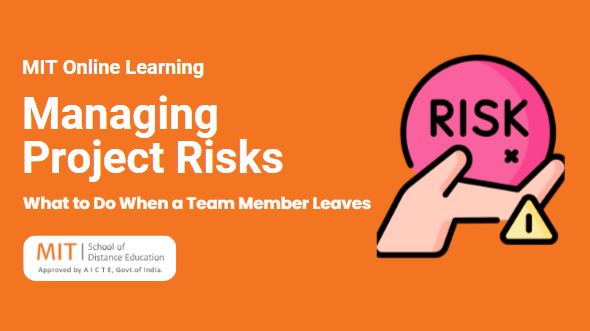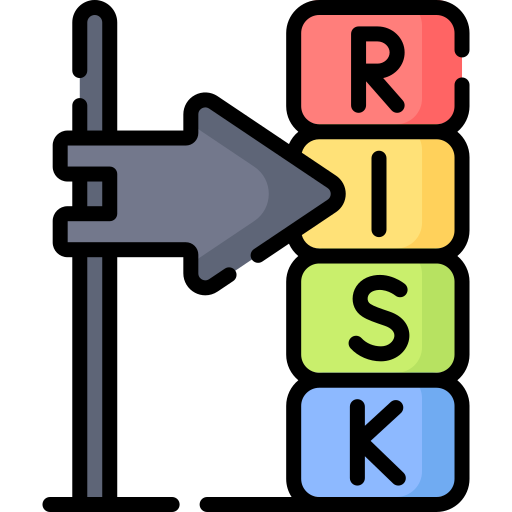
In every project, people are the real driving force. Tools, timelines, and processes mean nothing without the right people making decisions and taking action every day. That’s why losing a key team member—whether they resign, retire, transfer, or face unforeseen circumstances—can feel like a seismic shock.
The challenge is universal, but what separates average project managers from great ones is how to manage project risks when a key team member leaves. In this in-depth guide, we’ll explore practical steps to identify, mitigate, and plan for this risk so your project stays on track, your stakeholders remain confident, and your team stays motivated.
Why is this risk so critical?
Losing a key team member isn’t just about hiring a replacement. It affects:
- Institutional knowledge: Processes, client history, technical decisions
- Project timeline: Deadlines might slip
- Team morale: Others may feel anxious or overworked
- Quality: Short-term replacements may lack context
Even in well-managed projects, this is considered a critical risk—especially when the resource holds specialized skills or leadership responsibility.

Step 1: Accept the loss & respond calmly
When a key person leaves, it’s easy to panic. But in project management, the first task is acknowledging the new risk without letting emotion cloud judgment.
Tip:
Immediately document:
- Their role and responsibilities
- Current deliverables and deadlines
- Dependencies: who relies on them, and for what?
This helps you quantify the real impact and transition quickly to planning.
🔍 Step 2: Conduct a rapid risk assessment
You can’t fix what you don’t measure. Start a risk assessment workshop with your team. Identify:
- Tasks directly handled by the departing member
- Hidden dependencies (approvals, quality reviews, client communications)
- Potential delays or cost overruns
Use tools like:
- Risk Breakdown Structure (RBS): Categorizes risks into people, process, technical, and external
- Risk Register: Logs each identified risk, probability, impact, owner, and mitigation plan
This aligns with best practices in project risk management.
📚 Step 3: Capture and transfer knowledge quickly
Time is limited. Before the team member leaves:
- Hold exit interviews focused on current work, critical contacts, and undocumented procedures
- Request:
- Process documents
- Troubleshooting guides
- Tips & tricks they use daily
- If possible, record walkthroughs or screen-share sessions
Even if you can’t capture everything, focus on high-impact areas to minimize disruption.
🤝 Step 4: Assign a temporary replacement
Don’t wait to hire a permanent replacement. Temporarily:
- Promote a deputy or senior team member
- Distribute tasks across multiple people
- Prioritize high-risk tasks so they don’t stall the project
Document this in your project continuity plan.
Example:
If your lead developer leaves, another developer can handle code reviews while you look for a new hire, and the project manager can handle external stakeholder communication temporarily.
🛠 Step 5: Reassess resources and adjust the plan
Adjust your resource plan and update:
- Timeline: Extend deadlines if needed
- Budget: Include recruitment, onboarding, or overtime costs
- Scope: Consider deferring lower-priority features or deliverables
Update your risk register and share changes with the team.
🔄 Step 6: Use automation and tools to reduce dependency
If you relied too much on manual processes managed by that key person, now’s the time to:
- Automate reporting and status updates
- Use project management tools (like Jira, Trello, MS Project)
- Centralize documentation in shared drives or wikis
This isn’t just damage control—it builds resilience for the future.
📊 Step 7: Keep stakeholders informed
Losing a critical resource is a major change. According to PMI’s risk management framework, you should:
- Hold a stakeholder meeting
- Explain what happened, its impact, and your mitigation plan
- Share updated timelines or budgets transparently
Proactive communication keeps trust high—even when news isn’t ideal.
💪 Step 8: Boost team morale
The departure might leave the team demotivated or anxious. To keep morale high:
- Recognize the departing member’s contributions publicly
- Explain how responsibilities will be shared
- Reassure the team about project stability
Small gestures—team meetings, thank-you messages—go a long way.
📅 Step 9: Strengthen your project continuity plan
Once the immediate risk is handled, use this experience to prepare for the future:
- Identify other single points of failure
- Create backups for critical roles
- Cross-train staff
- Document processes thoroughly
- Periodically test your continuity plan
⚙️ Step 10: Close administrative tasks
Don’t forget the practical side:
- Disable or transfer system access
- Update organizational charts and contact lists
- Complete HR paperwork and final payroll
- Transfer licenses or software ownership
This avoids security risks and keeps systems tidy.

📌 Practical checklist: Manage project risks when a key team member leaves
Step | What to do | Why it matters |
Accept & assess | Identify impact quickly | React rationally |
Risk workshop | Use RBS & register | Quantify risk |
Knowledge transfer | Exit interview, docs | Retain expertise |
Temporary cover | Promote, split tasks | Avoid delays |
Adjust plan | Timeline, budget | Stay realistic |
Automate & document | Tools, wikis | Reduce future risk |
Communicate | Stakeholders & team | Build trust |
Boost morale | Support team | Prevent turnover |
Strengthen continuity | Cross-training | Build resilience |
Admin wrap-up | Access & HR | Avoid issues |
🧩 What to do if the departure was unexpected or immediate
Sometimes you can’t plan. In that case:
- Contact the person directly if possible for emergency handover
- Review recent emails, messages, and tools to identify current tasks
- Engage the broader team for a knowledge brainstorm
- Prioritize urgent deliverables only—defer less critical work
Speed matters—but so does clarity.
🌱 Build a resilient culture beyond project management
Managing project risks isn’t only about processes. It’s also about culture:
- Foster transparency: Encourage team members to share what they know
- Reward documentation: Make it part of performance reviews
- Practice “bus test”: Could your project survive if anyone left tomorrow?
This mindset turns a single risk event into long-term organizational strength.
✍️ Conclusion
In project management, the question isn’t if a key team member will leave—it’s when. By following these ten steps—risk assessment, documentation, reallocation, stakeholder communication, and long-term planning—you can manage project risks when a key team member leaves confidently.
The goal isn’t just to fix the immediate problem. It’s to build a project environment where knowledge is shared, risks are identified early, and teams remain strong—no matter who comes or goes.
By doing so, you don’t just protect your current project. You create a culture of resilience that supports every future project your team undertakes.
✅ Key takeaways
- Accept reality quickly—panic helps no one
- Map out the real risks using tools like RBS and a risk register
- Capture knowledge through exit interviews and documentation
- Use temporary cover and automation to keep progress steady
- Communicate clearly with stakeholders and your team
- Turn the event into an opportunity to strengthen your project continuity plan
Project management isn’t just about avoiding risks; it’s about being ready for them. And when your team is ready, losing even the most critical resource won’t derail your success.



